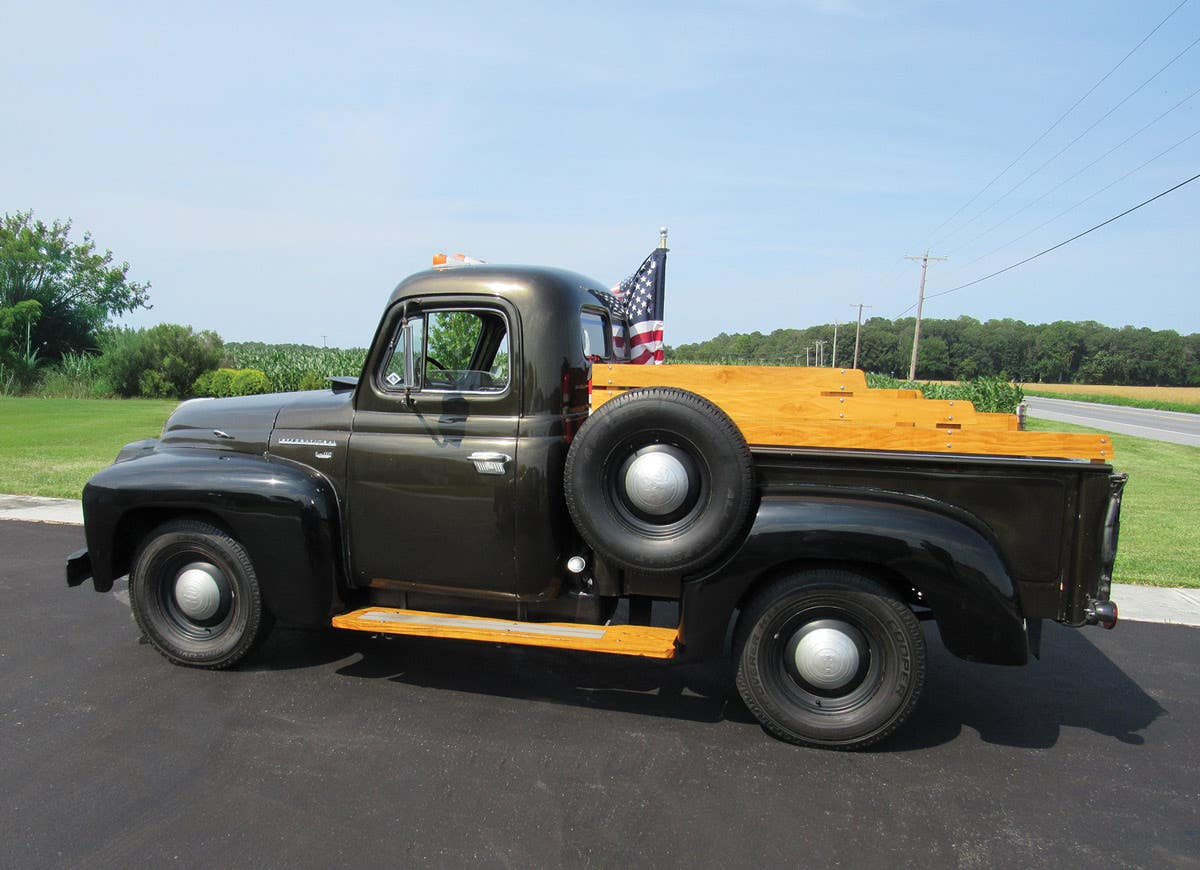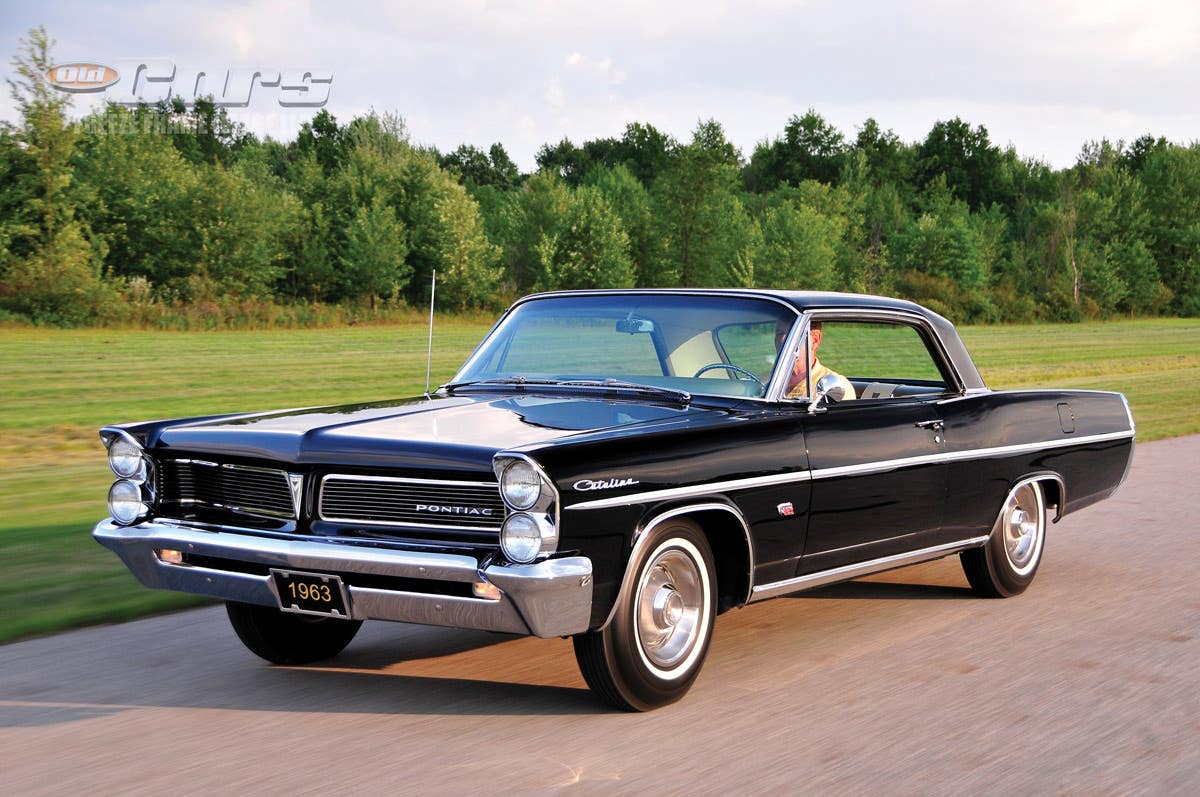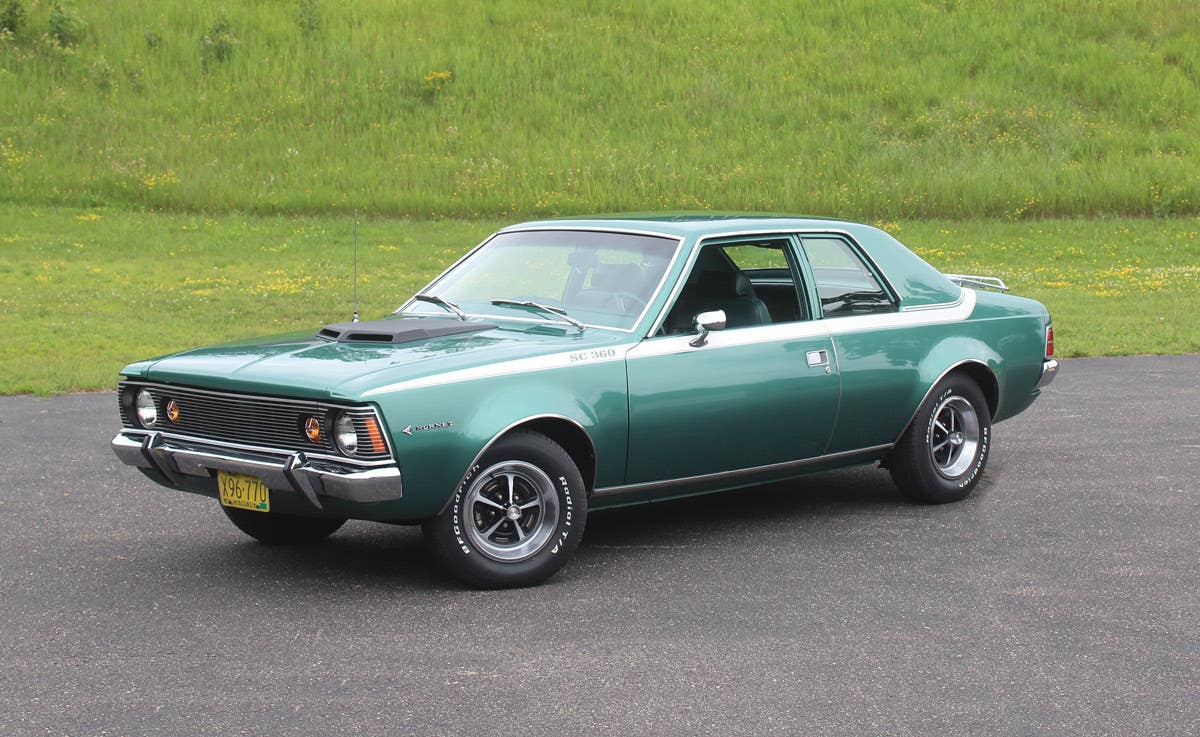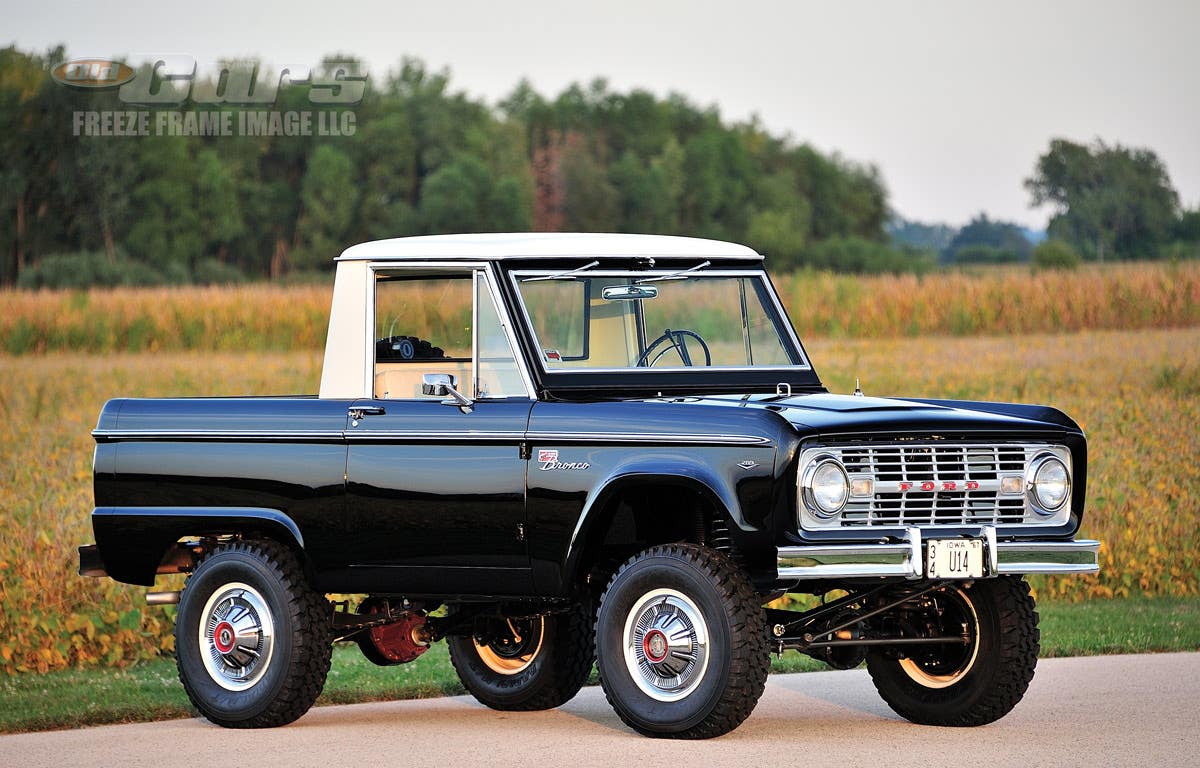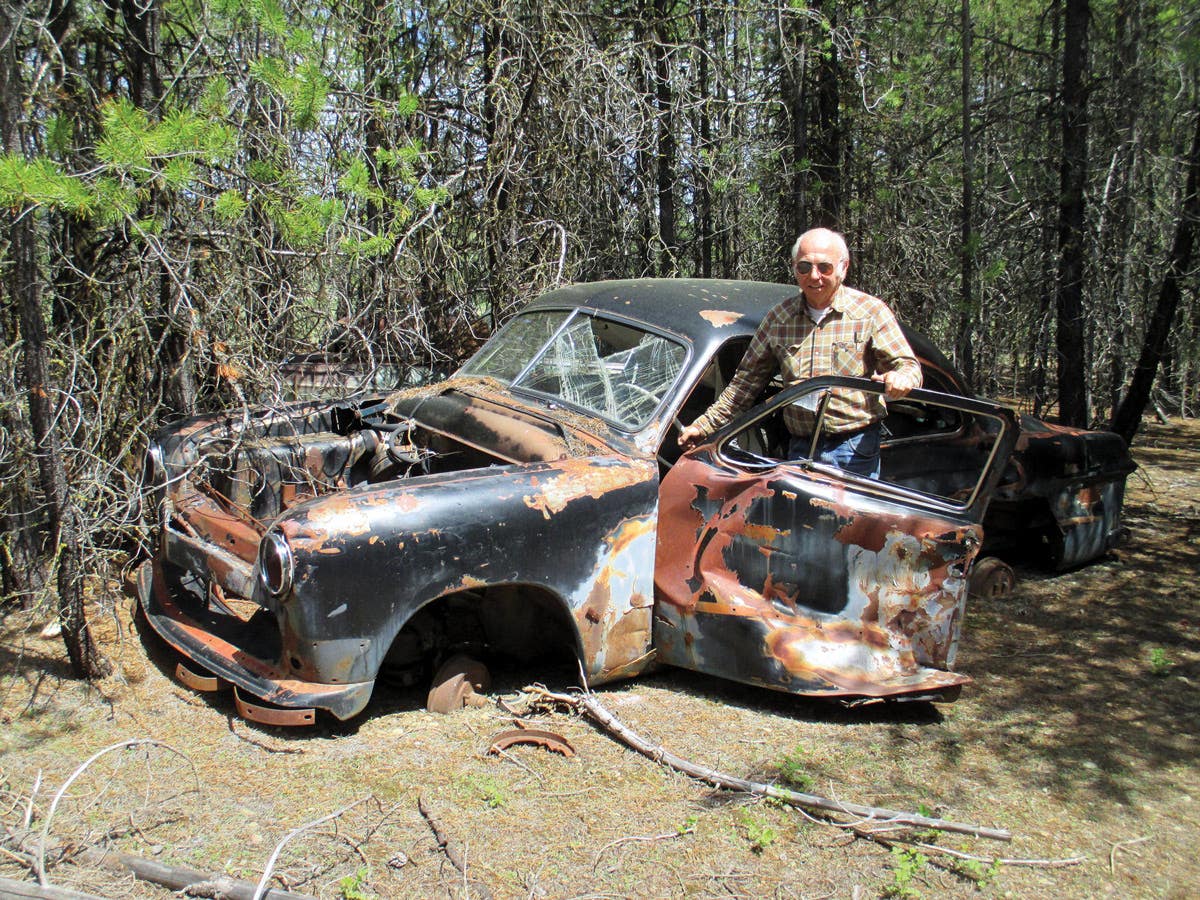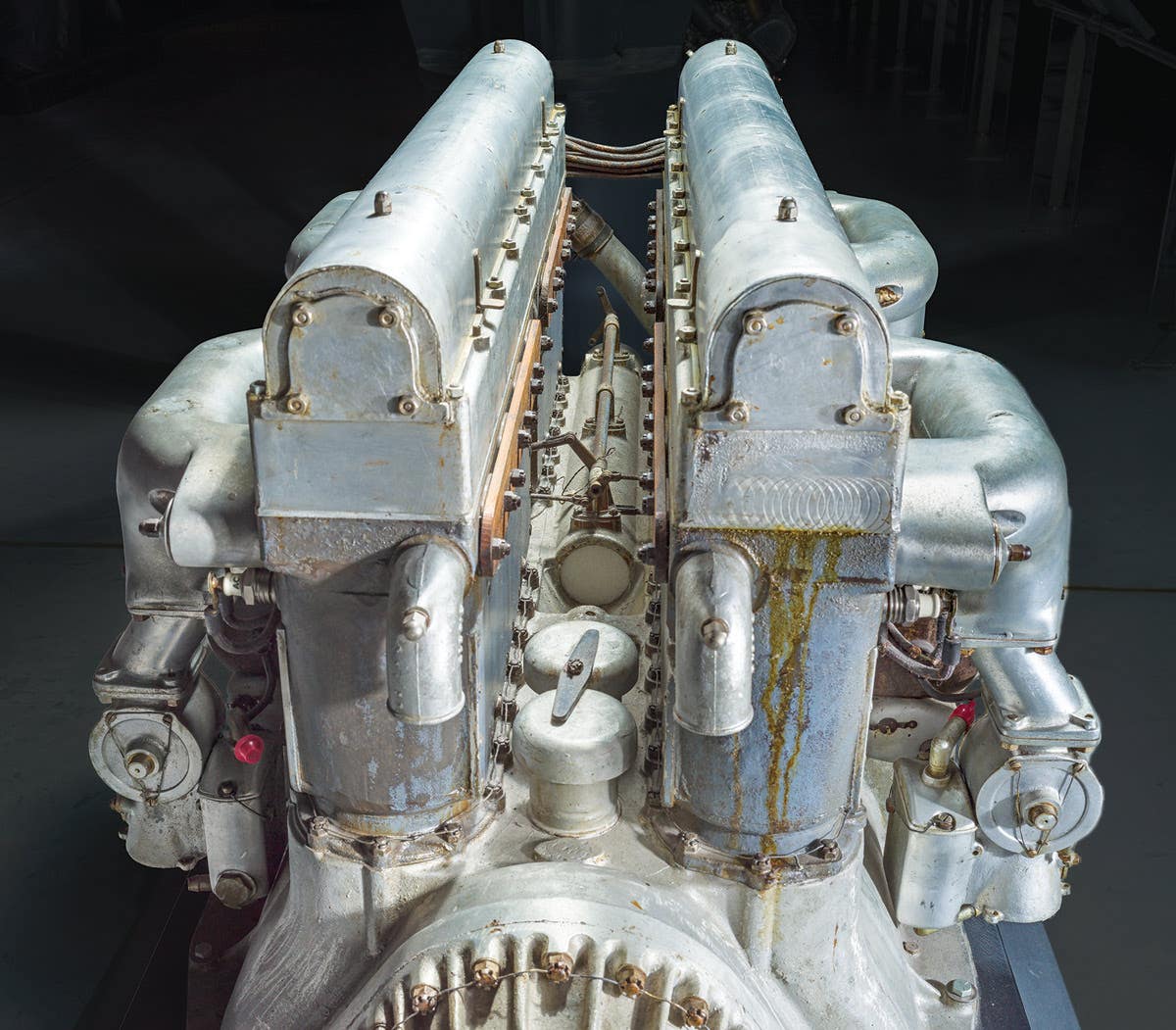Car of the Week: 1966 Studebaker Commander
If Isidor Pavlik didn’t insist on always wearing hats, Harland Tegen and his cherished 1966 Studebaker Commander almost certainly would have never crossed paths.
Story and photos by Brian Earnest
If Isidor Pavlik didn’t insist on always wearing hats, Harland Tegen and his cherished 1966 Studebaker Commander almost certainly would have never crossed paths.
“My uncle bought it in 1966, and you bet I remember when he bought it,” says Tegen, a retired resident of Omro, Wis. “He was older and he was always hung up on having a car with room for his hat. He always wanted to wear a hat, and if he couldn’t sit in it and wear a hat, he didn’t want the car.
“I always thought it was kind of an ugly car, because it was kind of boxy compared to some of the new stuff at the time. He died in 1976 and then I bought it from my aunt and I’ve had it ever since. She wanted to sell this one and get a car with an automatic. I bought two other cars from them, too — a 1930 Chevrolet that I still have, and a ’33 Ford.”
Tegen is the first to admit the blue Commander was never much in the looks department, but it had a few things going for it. It kept alive his connection to his uncle; it was a nice, solid used car with only 60,000 miles on the odometer at the time; and being a 1966 model, it was the last of a dying breed. Studebaker model year production in the venerable company’s final year was only 4,648 for 1966, and only a scant 198 of those assemblies were Commander two-door sedans.
Even in Studebaker circles, Tegen rarely bumps into another one.
“It’s not a very common car, but it’s a nice car for a hobby car,” he says. “They don’t get top dollar and it’s not a big car, so it’s easy to store and it’s fun. It’s a nice driver.
“I bought it and had the engine rebuilt and then had it repainted. Other than that it’s got the original upholstery and pretty much everything else is original on it. I’ve got the sales slip and everything. It was the last Studebaker sold by Denil Cadillac in Green Bay [Wis.]. I’ve got all kinds of literature and stuff with it.”
Pavlik plunked down a grand total of $2,027.50 of his hard-earned cash for his new Studebaker on April 15, 1966. That total included a few modest upgrades: $2.63 for a horn ring; $85 for the “Climatizer” auxiliary heater; $23.10 for undercoating; $30 for front and rear seat belts; and $9 for a padded visor. “It’s not fancy. No power brakes, no power steering," Tegen says. "I added a radio. When my uncle bought it new, he didn’t believe in radios. I found a radio many years ago. No air conditioning. It’s got the ‘455’ air conditioning – four windows down and doing 55 [mph].
THE LAST STUDEBAKERS
It seems a little strange, in hindsight, that an automaker in what proved to be its final year of production would come out with a snappy redesign and updated look for all its offerings, but that’s exactly what Studebaker did for the 1966 campaign. New single headlights replaced the old quad design and the grille was redesigned with a full-width arrangement. The moldings running along the body sides were dropped down to knee height and a new “Refreshaire” ventilation was built in that drew air from a vents above the tail lights in back.
The two-door Commander was the lowest-priced 1966 offering with a base sticker price of $2,060. The Commander, Daytona/Wagonaire and Cruiser series were all available with either six- or eight-cylinder power, with the V-8 adding about $130 to the bill. When the Studebaker plant closed in South Bend, Ind., engine production ceased, and the ’66 models were powered by one of two Chevy engines — the 194-cid six or the 283-cid/195-hp V-8. . A larger 230-cid six-cylinder engine with an 8.5:1 compression ratio and 140 hp at 4400 rpm was originally optional on six-cylinder series cars with automatic transmissions. It was later made optional on all six-cylinder series cars. Twin-Traction, disc brakes and transistor ignition (standard on the Daytona Sport Sedan) was optional, as were 7.75 × 15 tires and vinyl tops.
A three-speed manual transmission with column-mounted gearshift was standard on all models. Overdrive was available for $113 extra. Automatic was available for $192 extra on six-cylinder models and $225 extra on V-8 models.
A factory push for safety resulted in a host of new amenities and options: padded dash; padded sun visors; windshield washers and two-speed electric wipers; and safety door latches among them.
“These things really rusted pretty bad, and you can see the fit and finish on them isn’t perfect,” Tegen chuckles. “This one was made I think about four months before they quit putting them together, and then their sales were really bad.
“But Studebaker had a lot of good ideas [before that]… And you can get parts for them, surprisingly. I just put a new water pump on them a few weeks ago … When Studebaker went out of business they still had tons of parts down in South Bend, Ind.”
Production of Studebakers at the Hamilton, Ontario, Canada assembly plant officially ceased in March of 1966, a month before Isidore Pavlik picked up his car, ending 114 years of Studebaker tradition and 64 years of Studebaker automobile production.
ALL IN THE FAMILY
Almost all of the work Tegen has done to his Commander came not long after he got it. Since then, it has been pretty much trouble-free weekend transportation — in the summer time, of course — and a handy “extra” car to have around. “We took the whole front off it, cleaned everything up underneath did some bodywork and fixed some spots,” he says. “All that was done back in the ‘70s. We put a little new sheet metal in there and repainted it. This is the original color … But the car has never been in a accident. I don’t think it’s ever had a dent in it.”
Part of the reason it's been ding-free is the battering ram/dent protector that Tegen installed long ago. Sure it’s a trailer hitch, but Tegen doesn’t use it to tow anything. He says it’s strictly protection for the Commander’s rear bumper. “There isn’t much protection there. I put a trailer hitch on there just so nobody backs into me, and I won’t back into anybody, either.”
“It’s got 105,000 [miles] on it now. It had somewhere around 60,000 when I got it. At one time I kind of drove it as a second car when the kids were in high school. Every one of my kids learned to drive on this car. We’d take the car over to the Sears parking lot and they’d drive it. I wanted to make sure they learned on a standard transmission.”
Last summer, Tegen and his sons added a few ticks to the clock with their annual 1-hour trek from Omro to the Iola Car Show in Wisconsin. The Commander looked right at home among a nice group of other Studebakers in the corral of invited cars. “It drove great. We had it up to 70 [mph] once or twice today, I think. It does 65 real good on the highway. They are noisy. These old cars are noisy, not like the new ones. You get a lot of wind noise on them … but it goes right along. I can drive it on the Interstate if I want.”
More than anything, the Commander gives Tegen a chance to stay in touch with days gone by and preserve happy memories of his uncle. Each cheerful journey and enjoyable day behind the wheel, he figures, deserves a tip of the cap.
______________________
Show us your wheels!
If you’ve got an old car you love, we want to hear about it. Email us at oldcars@aimmedia.com
*As an Amazon Associate, Old Cars earns from qualifying purchases.



